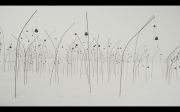Anime. Di luogo in luogo. Christian Boltanski

Christian Boltanski is the artist selected for the special cultural project promoted by the city of Bologna in 2017. The French artist, one of the most important living ones at international level, will be the main focus of a rich programme of cultural events called Anime. Di luogo in luogo, promoted by the Municipality of Bologna (namely through its Department for Culture and Relations with the University and the Istituzione Bologna Musei) together with Emilia-Romagna Teatro Fondazione, in conjunction with the Emilia-Romagna region and the Association of the relatives of the victims of the Ustica disaster.
The project, curated by Danilo Eccher and taking place from June to November, will include several events and involve many urban venues, all featuring the multi-faceted work of Boltanski. The programme includes a large anthological exhibition at the MAMbo - Museo d'Arte Moderna di Bologna (Museum of Modern Art) a play at the Arena del Sole theatre, an installation at the former powder keg bunker inside the Lunetta Gamberini garden and a special project inside the area of the former Giuriolo parking lot.
Anime. Di luogo in luogo, designed in close cooperation with the artist, is made of complementary components, namely contemporary art, urban fabric and society, whose interaction materializes along the axis of memory and time, considered as an inevitable passageway between life and death. These concepts are evoked by the very same title of the project that crosses time, space, philosophy and religion.
The choice of Christian Boltanski gains an even greater and deeper meaning because it coincides with some key city anniversaries: the 10th anniversary of both MAMbo and the Memorial Ustica Museum, the 37th anniversary of the Ustica disaster, the 40th anniversary of Emilia-Romagna Teatro Fondazione. Therefore, this forcefully compelling project will certainly take root into the cultural, civil and historic heritage of the city resulting in an even closer and fruitful relation between memory and contemporaneity.
The core of the whole project, the anthological exhibition displayed at the MAMbo museum from June 26 until November 12, will be the largest ever organized in Italy with more than 20 installations. It will also revive the role of museums not only as places of heritage conservation and display but also as places of research and production of contemporary culture.
The exhibition will retrace Boltanski’s poetics, from the mid Eighties until the most recent years and will unfold according to some specific topics that have always crossed his work: disappearance, the dialectic relation between life and death, the frailty of memory and recollections, the fight against the inevitability of oblivion, the inherent tragic sense of history.
The imposing Chimney Hall, heart of the museum and of entire exhibition trail, will be haunted by a diffused maze-like installation entitled Regard-Eyes: black and white blurred images of anonymous faces printed on large-sized see-through fabric cloths. These pictures, coming directly from the personal photo archives of the artist will act as ghostly disturbing presences and invite visitors to let themselves go with the flow of time and memory.
At the centre of the room dawns the estranging preciousness of Volver, a more-than-three-meter tall pyramid entirely covered in golden isothermal covers, reminding of the first aid and rescue care delivered to migrants. The dialogue established by Boltanski between the two works seems to suggest some immanent proximity between the presence/absence of those faces, whose only remaining trace is a fading glance, and the migrants, contemporary nameless ghosts, both deprived of their stories and individual identities.
The exhibition will be opened on Sunday June 25 h 7.30 p.m. at the presence of the artist.
DOWNOLAD INVITATION
Image: Christian Boltanski, Animitas (blanc), © Christian Boltanski, 2017






